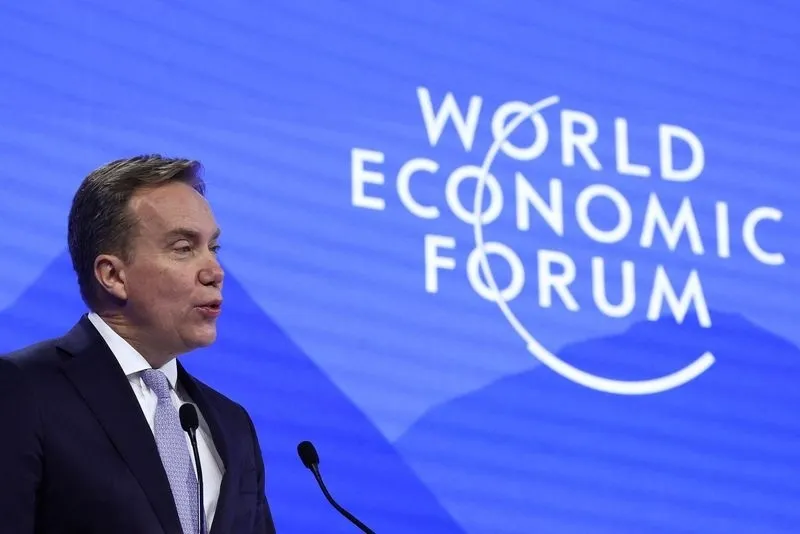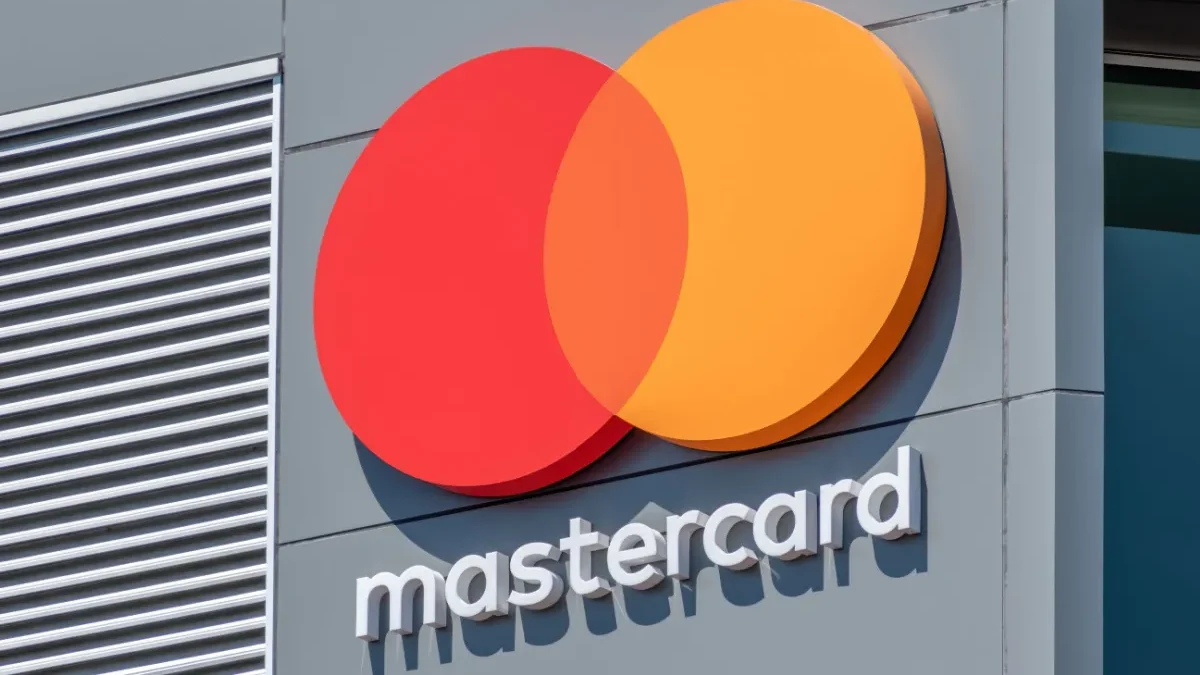Ripple has completed a landmark strategic investment round of $500 million, valuing the financial technology company at $40 billion, marking one of the most significant funding events in the cryptocurrency sector this year. The investment round was led by funds managed by affiliates of Fortress Investment Group and Citadel Securities, with participation from prominent digital asset investors including Pantera Capital, Galaxy Digital, Brevan Howard, and Marshall Wace.
This financing represents a major endorsement from traditional Wall Street institutions of Ripple’s expanding infrastructure for digital assets. The investment follows Ripple’s $1 billion tender offer earlier in 2025 at the same $40 billion valuation, underscoring sustained confidence in the company’s growth trajectory and long-term vision as it positions itself as the premier partner for institutions entering the cryptocurrency and blockchain space.
Build the future you deserve. Get started with our top-tier Online courses: ACCA, HESI A2, ATI TEAS 7, HESI EXIT, NCLEX-RN, NCLEX-PN, and Financial Literacy. Let Serrari Ed guide your path to success. Enroll today.
Expanding Beyond Payments: Ripple’s Strategic Evolution
Since its founding in 2012 with a singular focus on cross-border payments, Ripple has methodically expanded its product suite to encompass multiple pillars of digital asset infrastructure. The company now provides comprehensive solutions including custody services, stablecoin issuance, prime brokerage, and corporate treasury management—all leveraging digital assets like XRP, the native token of the XRP Ledger.
“This investment reflects both Ripple’s incredible momentum, and further validation of the market opportunity we’re aggressively pursuing by some of the most trusted financial institutions in the world,” said Brad Garlinghouse, Ripple’s Chief Executive Officer. “We started in 2012 with one use case—payments—and have expanded that success into custody, stablecoins, prime brokerage and corporate treasury, leveraging digital assets like XRP. Today, Ripple stands as the partner for institutions looking to access crypto and blockchain.”
The fresh capital will enable Ripple to deepen relationships with financial institutions and accelerate the development of its expanding product portfolio. The company has completed six major acquisitions in just over two years, including two valued at over $1 billion each, dramatically expanding its footprint across payments, custody, stablecoins, prime brokerage, and treasury management.
Record Growth and Operational Milestones
Ripple’s business metrics demonstrate substantial momentum across its core operations. The company’s Ripple Payments platform has now processed more than $95 billion in total transaction volume, a clear indication of growing demand and real-world utility for blockchain-based payment solutions. This volume represents cross-border payments and settlements facilitated through Ripple’s network, which offers financial institutions faster, more transparent, and more cost-effective alternatives to traditional correspondent banking systems.
Earlier this year, Ripple acquired stablecoin infrastructure company Rail, adding critical capabilities to Ripple Payments and transforming it into a full-service cross-border platform. With 75 regulatory licenses across multiple jurisdictions, Ripple can now move money directly on behalf of its customers, cutting out intermediaries and simplifying liquidity management and on-and-off ramps for businesses operating globally.
The company’s Ripple USD (RLUSD) stablecoin has achieved remarkable traction, crossing $1 billion in market capitalization in less than a year since its launch. This milestone positions RLUSD as the seventh-largest stablecoin in the market, according to data compiled by CoinMarketCap. The rapid adoption of RLUSD reflects increasing institutional confidence in Ripple’s regulatory compliance and the growing demand for trusted dollar-backed stablecoins in corporate treasury and payment applications.
The GENIUS Act: A Regulatory Turning Point
The investment comes at a pivotal moment for the stablecoin industry following the passage of groundbreaking federal legislation. In July 2025, President Donald Trump signed into law the Guiding and Establishing National Innovation for US Stablecoins Act, commonly known as the GENIUS Act. This landmark legislation established the first comprehensive federal regulatory framework for payment stablecoins in the United States.
The GENIUS Act requires stablecoin issuers to maintain reserves backing outstanding stablecoins on at least a one-to-one basis, consisting of high-quality liquid assets including US dollars, short-term Treasury securities, and other approved assets. The legislation creates clear regulatory pathways for both bank and non-bank institutions to issue stablecoins, with oversight provided by federal banking regulators or the Office of the Comptroller of the Currency for federally licensed non-bank issuers.
This regulatory clarity has catalyzed a wave of institutional adoption. In the wake of the GENIUS Act, traditional financial institutions, fintechs, and corporations are increasingly turning to stablecoins for treasury payments, collateral management, and cross-border settlement. Stablecoins offer the advantages of blockchain technology—including 24/7/365 availability, near-instantaneous settlement, and programmability—while maintaining price stability through their backing by reserve assets.
“In a post-GENIUS Act world, institutions are increasingly turning to trusted stablecoins like RLUSD for use cases such as treasury payments and collateral,” Ripple noted in its announcement. The regulatory framework has removed significant uncertainty that previously hindered institutional adoption, allowing companies like Ripple to confidently expand their stablecoin offerings.
Strategic Acquisitions Fuel Expansion
Ripple’s aggressive acquisition strategy has been central to its transformation from a payments-focused company into a full-spectrum digital asset infrastructure provider. The company has deployed approximately $4 billion in strategic investments throughout 2025, fundamentally reshaping its capabilities and market position.
In October 2025, Ripple completed its $1.25 billion acquisition of Hidden Road, a multi-asset prime brokerage. The acquisition has been rebranded as Ripple Prime, providing institutional clients with integrated prime brokerage services that now include over-the-counter (OTC) spot trading for dozens of major digital assets, including XRP and RLUSD, alongside derivatives, swaps, fixed income, and foreign exchange products.
Since completing the Hidden Road acquisition, Ripple Prime has experienced explosive growth. Client collateral has doubled, average daily transactions have climbed to more than 60 million, and the business has tripled in size. RLUSD is already being utilized as collateral within Ripple Prime, demonstrating the practical integration of Ripple’s stablecoin into institutional financial infrastructure. The platform now enables U.S. institutions to cross-margin OTC spot positions alongside swaps and CME-listed futures and options, providing unprecedented trading flexibility for institutional clients.
A critical component of Ripple’s expansion into corporate markets came through its acquisition of GTreasury, a leading provider of treasury management systems. GTreasury manages trillions of dollars in volume for Fortune 500 companies, providing Ripple with immediate access to enterprise customers seeking to modernize their treasury operations with digital assets. This acquisition positions Ripple to capture a significant share of the multi-trillion-dollar corporate treasury market, where companies are increasingly interested in using stablecoins and digital assets to move money around the clock and optimize their idle capital.
Most recently, Ripple acquired Palisade, a digital asset custody provider, further strengthening its ability to offer institutional-grade storage and security solutions for digital assets. This acquisition complements Ripple’s existing custody offerings and demonstrates the company’s commitment to providing end-to-end infrastructure for institutions entering the digital asset ecosystem.
XRP’s Growing Institutional Role
Under the more crypto-friendly Trump administration, Ripple aims to significantly expand institutional use of its XRP token and deepen its footprint in capital markets. XRP serves as a bridge asset in Ripple’s On-Demand Liquidity (ODL) service, which enables financial institutions to source liquidity for cross-border payments in real-time without maintaining pre-funded accounts in destination currencies.
The utility and adoption of XRP have expanded significantly in 2025. XRP futures contracts on the Chicago Mercantile Exchange (CME) have seen substantial trading volume, with open interest reaching significant milestones since their launch. The availability of regulated XRP derivatives provides institutional investors with tools for hedging, speculation, and gaining exposure to the digital asset through familiar, regulated channels.
RippleNet, the company’s global payments network, has continued to attract major financial institutions. As of late 2025, over 300 financial institutions are reported to have joined RippleNet, including major names such as SBI Holdings, Santander, Standard Chartered, and American Express. The network processed approximately $1.3 trillion in quarterly volume in Q2 2025 alone, demonstrating the substantial scale of real-world adoption for blockchain-based payment infrastructure.
The XRP Ledger has also seen significant growth in active addresses and transaction volumes throughout 2025, reflecting increased usage and adoption. Ripple is positioning the XRP Ledger as a regulatory-friendly blockchain through planned enhancements including programmability features, integration with Ethereum Virtual Machine (EVM) compatibility, enhanced tokenization capabilities for real-world assets, and expanded DeFi functionality including lending protocols.
One decision can change your entire career. Take that step with our Online courses in ACCA, HESI A2, ATI TEAS 7, HESI EXIT, NCLEX-RN, NCLEX-PN, and Financial Literacy. Join Serrari Ed and start building your brighter future today.
The Stablecoin Market Opportunity
The broader stablecoin market has experienced explosive growth, creating a substantial opportunity for well-positioned players like Ripple. Stablecoin transaction volumes have surged dramatically, with some analysts noting that monthly stablecoin transactions now exceed $1 trillion—representing approximately 10 times the volume seen at the end of 2020.
U.S. dollar-backed stablecoins reached more than $260 billion in total market capitalization by the third quarter of 2025, with substantial growth across multiple issuers. While Tether’s USDT continues to hold the largest market share, Circle’s USDC has shown particularly rapid growth, and newer entrants like Ripple’s RLUSD are gaining significant traction.
Financial institutions and corporations are increasingly recognizing stablecoins as valuable tools for treasury management and cross-border payments. Stablecoins can significantly reduce the cost of cross-border remittances, enable 24/7 settlement without weekend or holiday delays, simplify multinational corporate cash management, provide programmable money for automated treasury operations, and offer collateral for trading and derivatives activities.
Ripple’s strategic positioning across multiple aspects of the stablecoin ecosystem—issuance (RLUSD), custody, payments infrastructure, and prime brokerage integration—positions the company to capture value across the entire stablecoin value chain as institutional adoption accelerates.
Shareholder Value and Employee Liquidity
As Ripple continues its record year of growth, providing liquidity for shareholders and employees remains a strategic priority. The company has repurchased more than 25% of its outstanding shares in recent years, returning meaningful value to employees and early investors who have supported the company’s mission since its founding.
The combination of the recent tender offer and this new strategic investment provides additional liquidity opportunities while bringing in world-class institutional investors who can provide strategic value beyond capital. The participation of sophisticated financial institutions like Fortress and Citadel Securities validates Ripple’s business model and growth trajectory while potentially opening doors to additional partnerships and business development opportunities.
Market Context and Competition
Ripple’s $40 billion valuation places it among the most valuable private fintech and cryptocurrency companies globally. The valuation reflects not only the company’s current financial performance but also the substantial market opportunity in digital asset infrastructure as traditional financial institutions increasingly adopt blockchain technology and cryptocurrencies.
The competitive landscape for blockchain-based payments and institutional cryptocurrency infrastructure is intensifying. Companies like Coinbase, Circle, and various blockchain networks are all vying to become the preferred infrastructure providers for institutions entering the digital asset space. Ripple’s differentiation lies in its comprehensive product suite, extensive regulatory licenses, established relationships with financial institutions, and the utility of XRP as a bridge asset for cross-border payments.
The favorable regulatory environment under the Trump administration has been a significant catalyst for the industry. Beyond the GENIUS Act for stablecoins, the administration has taken various steps to support cryptocurrency adoption, including ending or settling various enforcement actions initiated by the Securities and Exchange Commission during previous administrations. Ripple itself benefited from the resolution of its long-running legal dispute with the SEC, which had claimed that XRP was an unregistered security.
Looking Forward: Institutional Crypto Adoption
The influx of institutional capital into Ripple reflects a broader trend of traditional finance embracing digital assets. Following years of regulatory uncertainty and market volatility, institutional investors are increasingly viewing digital asset infrastructure as a strategic investment opportunity. The maturation of cryptocurrency markets, improved regulatory clarity, and the demonstrated utility of blockchain technology for payments and settlements have converged to create favorable conditions for institutional adoption.
Monica Long, Ripple’s President, has emphasized that institutional usage of XRP is accelerating, noting that the company has doubled its customer count quarter-over-quarter in certain business segments. The momentum in stablecoin payments aligns perfectly with Ripple’s core strategy, which has consistently focused on using digital assets to solve real-world payment challenges.
Industry analysts project continued growth in institutional cryptocurrency adoption, driven by several factors including the approval and launch of cryptocurrency exchange-traded funds (ETFs), increasing tokenization of traditional financial assets, integration of stablecoins into corporate treasury operations, expansion of cryptocurrency derivatives markets, and growing recognition of blockchain’s efficiency advantages for certain financial operations.
Ripple’s positioning across multiple aspects of this ecosystem—from the foundational XRP Ledger blockchain to stablecoins, custody, payments, prime brokerage, and treasury management—provides the company with multiple avenues for growth as institutional adoption accelerates.
Challenges and Considerations
Despite the positive momentum, Ripple faces several challenges as it executes on its ambitious growth strategy. The cryptocurrency market remains volatile, and broader market downturns could impact the company’s transaction volumes and the value of its XRP holdings. Regulatory requirements continue to evolve, and Ripple must navigate complex compliance obligations across multiple jurisdictions as it expands globally.
Competition is intensifying as more companies recognize the opportunity in institutional digital asset infrastructure. Established financial institutions are also building or acquiring their own blockchain capabilities, potentially reducing reliance on third-party providers like Ripple. The company must continue to innovate and demonstrate clear value propositions to maintain its competitive position.
Integration challenges also loom as Ripple absorbs multiple large acquisitions in a compressed timeframe. Successfully combining different corporate cultures, technology platforms, and business processes while maintaining growth momentum will be critical to realizing the full value of these investments.
Conclusion
Ripple’s $500 million funding round at a $40 billion valuation represents a watershed moment for both the company and the broader institutional cryptocurrency adoption narrative. The participation of premier Wall Street institutions like Fortress and Citadel Securities validates Ripple’s strategy of building comprehensive digital asset infrastructure for traditional financial institutions.
With regulatory clarity improving through legislation like the GENIUS Act, significant operational traction demonstrated through $95 billion in payment volumes, and a rapidly expanding product portfolio spanning custody, stablecoins, prime brokerage, and treasury management, Ripple appears well-positioned to capitalize on the growing institutional appetite for blockchain-based financial infrastructure.
As Brad Garlinghouse noted, this investment reflects both Ripple’s momentum and validation of the substantial market opportunity the company is pursuing. Whether Ripple can execute on its ambitious vision of becoming the definitive partner for institutions accessing cryptocurrency and blockchain technology will likely become clearer over the coming quarters as the company integrates its acquisitions, scales its operations, and navigates an evolving competitive and regulatory landscape.
For the cryptocurrency industry broadly, Ripple’s success in attracting institutional capital at such a substantial valuation signals growing mainstream acceptance of digital assets as a legitimate and valuable component of the global financial system. As more institutions commit capital and resources to blockchain infrastructure, the vision of a more efficient, transparent, and accessible financial system enabled by digital assets moves closer to reality.
Ready to take your career to the next level? Join our Online courses: ACCA, HESI A2, ATI TEAS 7 , HESI EXIT , NCLEX – RN and NCLEX – PN, Financial Literacy!🌟 Dive into a world of opportunities and empower yourself for success. Explore more at Serrari Ed and start your exciting journey today! ✨
Track GDP, Inflation and Central Bank rates for top African markets with Serrari’s comparator tool.
See today’s Treasury bonds and Money market funds movement across financial service providers in Kenya, using Serrari’s comparator tools.
photo source: Google
By: Montel Kamau
Serrari Financial Analyst
6th November, 2025
Article, Financial and News Disclaimer
The Value of a Financial Advisor
While this article offers valuable insights, it is essential to recognize that personal finance can be highly complex and unique to each individual. A financial advisor provides professional expertise and personalized guidance to help you make well-informed decisions tailored to your specific circumstances and goals.
Beyond offering knowledge, a financial advisor serves as a trusted partner to help you stay disciplined, avoid common pitfalls, and remain focused on your long-term objectives. Their perspective and experience can complement your own efforts, enhancing your financial well-being and ensuring a more confident approach to managing your finances.
Disclaimer: This article is for informational purposes only and does not constitute financial advice. Readers are encouraged to consult a licensed financial advisor to obtain guidance specific to their financial situation.
Article and News Disclaimer
The information provided on www.serrarigroup.com is for general informational purposes only. While we strive to keep the information up to date and accurate, we make no representations or warranties of any kind, express or implied, about the completeness, accuracy, reliability, suitability, or availability with respect to the website or the information, products, services, or related graphics contained on the website for any purpose. Any reliance you place on such information is therefore strictly at your own risk.
www.serrarigroup.com is not responsible for any errors or omissions, or for the results obtained from the use of this information. All information on the website is provided on an as-is basis, with no guarantee of completeness, accuracy, timeliness, or of the results obtained from the use of this information, and without warranty of any kind, express or implied, including but not limited to warranties of performance, merchantability, and fitness for a particular purpose.
In no event will www.serrarigroup.com be liable to you or anyone else for any decision made or action taken in reliance on the information provided on the website or for any consequential, special, or similar damages, even if advised of the possibility of such damages.
The articles, news, and information presented on www.serrarigroup.com reflect the opinions of the respective authors and contributors and do not necessarily represent the views of the website or its management. Any views or opinions expressed are solely those of the individual authors and do not represent the website's views or opinions as a whole.
The content on www.serrarigroup.com may include links to external websites, which are provided for convenience and informational purposes only. We have no control over the nature, content, and availability of those sites. The inclusion of any links does not necessarily imply a recommendation or endorsement of the views expressed within them.
Every effort is made to keep the website up and running smoothly. However, www.serrarigroup.com takes no responsibility for, and will not be liable for, the website being temporarily unavailable due to technical issues beyond our control.
Please note that laws, regulations, and information can change rapidly, and we advise you to conduct further research and seek professional advice when necessary.
By using www.serrarigroup.com, you agree to this disclaimer and its terms. If you do not agree with this disclaimer, please do not use the website.
www.serrarigroup.com, reserves the right to update, modify, or remove any part of this disclaimer without prior notice. It is your responsibility to review this disclaimer periodically for changes.
Serrari Group 2025












